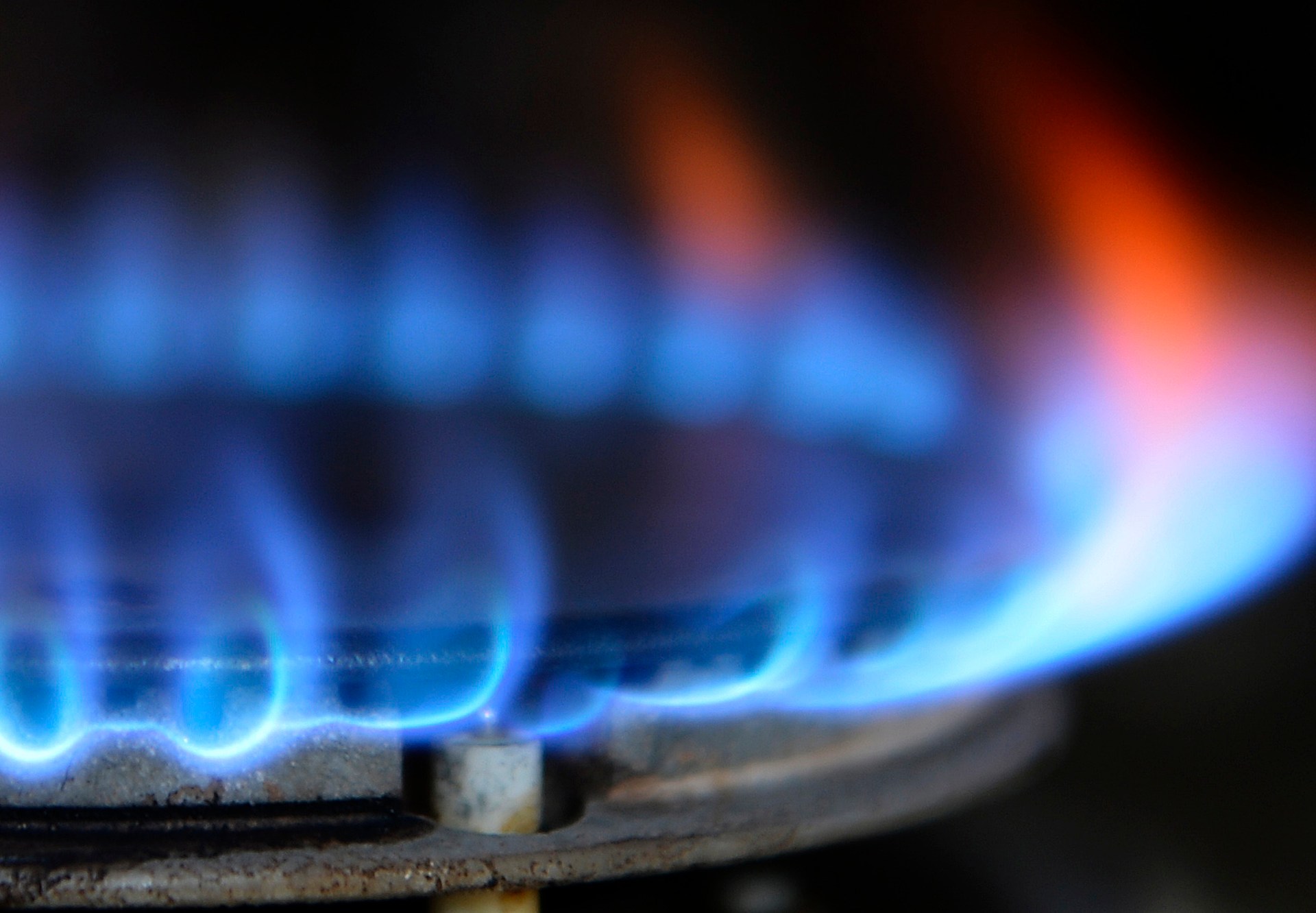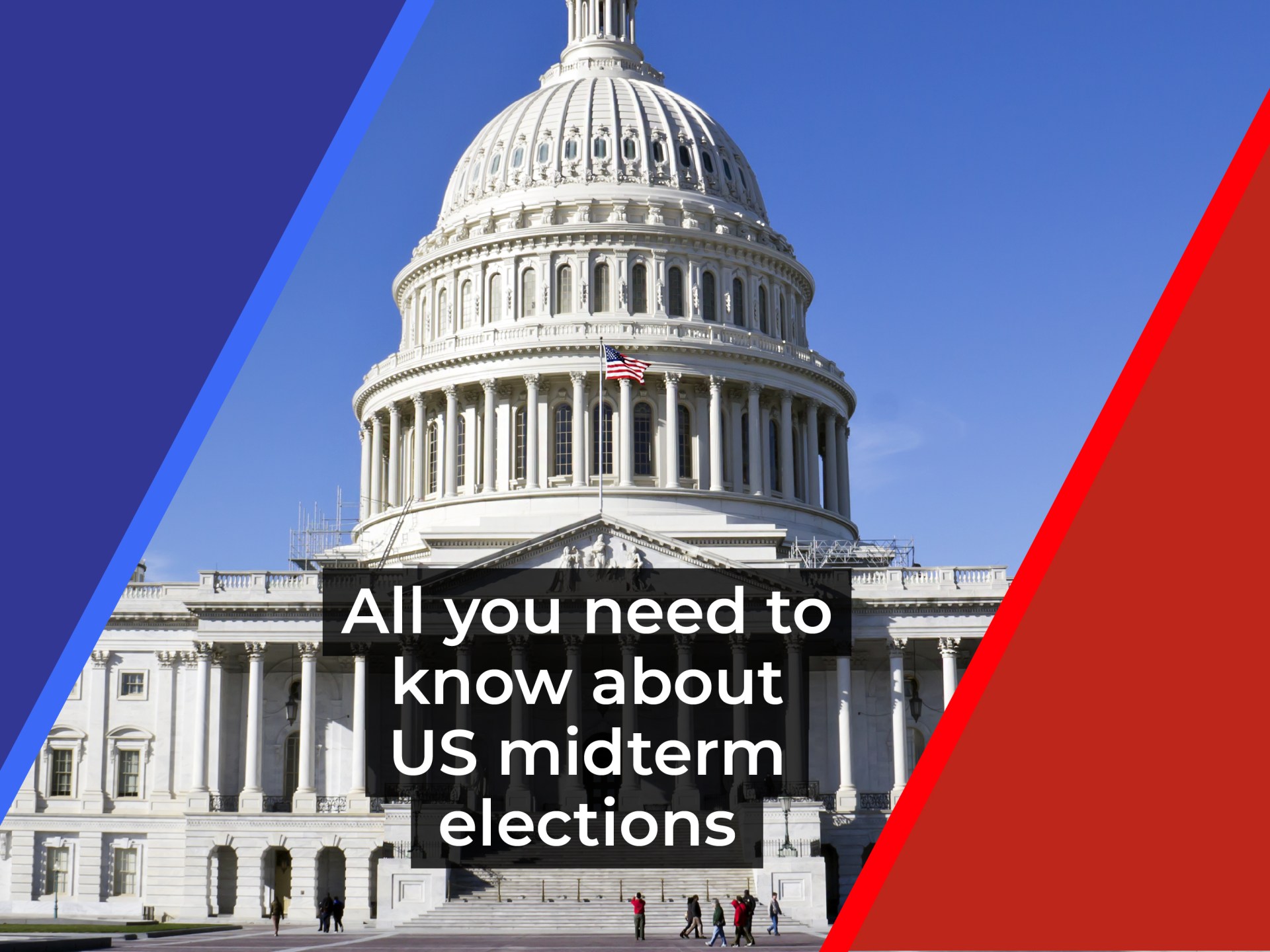Europe leaps towards energy autonomy as sanctions undercut Russia | Russia-Ukraine war News
Before its invasion of Ukraine, Russia was Europe’s chief energy source.
It supplied 29 percent of the European Union’s oil imports and 43 percent of its gas imports. Moscow was on the cusp of activating the twin Nordstream 2 pipelines, which would have increased its gas exports to the EU by a third.
This energy relationship came crashing down in February last year, as Russian troops entered Ukraine’s eastern Donbas region.
Germany, which had nurtured the Nordstream 2 pipelines for 15 years against United States objections, said it was halting the process of certifying them for commercial use.
After Russia launched its full invasion of Ukraine on February 24, 2022, Dutch oil major Shell said it was withdrawing from joint projects worth $3bn with Gazprom, the Russian gas monopoly, crippling Gazprom’s ability to develop its fields.
United Kingdom oil major BP said it would extricate itself from a $14bn stake in Rosneft, Russia’s state oil giant.
Since then, the EU has sought to de-fund Russia’s war by sanctioning its coal and oil imports, while Russia has sought to weaken the EU and NATO unity by cutting off flows of natural gas.
But the energy levers that Russian President Vladimir Putin would use to mute Europe’s response to his invasion were instead broken.
“When Russia attacked Ukraine, one working hypothesis was that Europe… would be divided by energy blackmail,” Greek Foreign Minister Nikos Dendias told reporters on the anniversary of the Donbas invasion.
“This hypothesis was completely inaccurate. The EU gained a new unifying narrative and the support to Ukraine is steady, lasting and increasing,” Dendias said.
According to Sir Michael Leigh – the former director-general for enlargement at the European Commission, who now directs the European Public Policy programme at Johns Hopkins University – on the European Union side, there is now a “real determination to reduce drastically dependence” on Russian oil and gas.
“We’ve had a major dose of realism coming into German and European energy policy, and this has put the foot down on the accelerator in energy transition,” Leigh told Al Jazeera.
That transition has lurched forward through recent crises. In 2020, during the coronavirus pandemic recession, the EU raised 270 billion euros ($287bn) to fund renewable energy.
After Russia’s invasion, it stiffened its ambition, setting a goal to generate 45 percent of total final energy consumption from renewables. Several EU governments set even more ambitious goals.
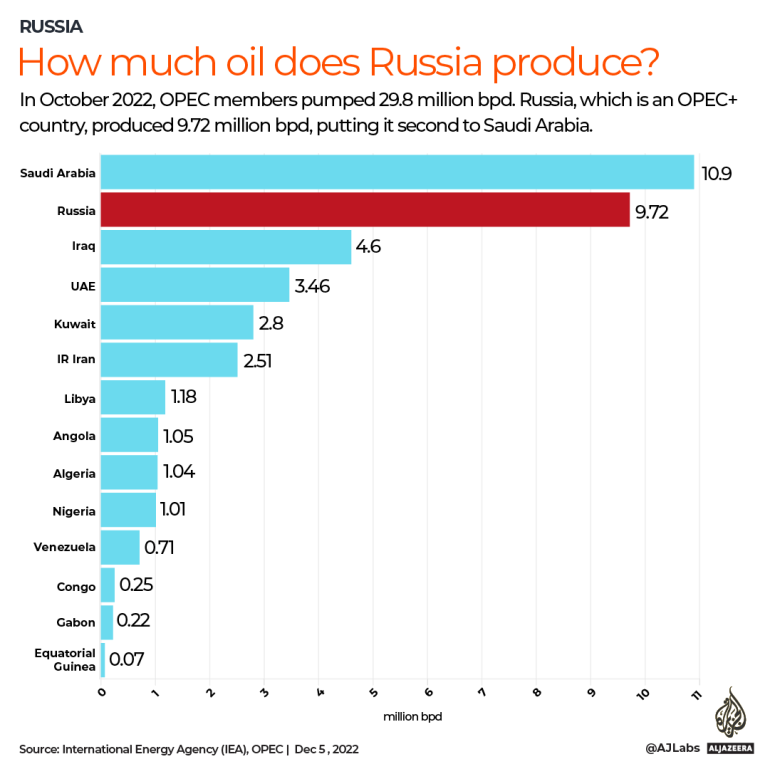
Recent analysis by Ember, an energy think-tank, suggests Europeans have moved even faster than their governments.
Ember estimates that electricity from solar photovoltaics and wind reached a record 22 percent of the mix in the EU last year, a one-fifth increase on 2021, with two-thirds of the increase in solar energy coming from rooftop photovoltaics, not power plants.
“The energy transition in Europe is not from the top down – what we’re seeing is it’s bottom up,” Dave Jones, head of electricity insights at Ember, told Al Jazeera. “Individuals are interested in producing their own energy and doing their bit for the energy crisis to defy Russia as an aggressor and a threat to Europe,” he said.
“If people want to step up they can act outside of policy,” said Jones, who believes solar and wind will leap ahead by another fifth this year, and possibly outperform EU 2030 targets.
Renewable energy has obvious attractions for Europe, which is poor in hydrocarbons. Apart from being clean, it on-shores energy production at near-constant prices.
Has Europe punished Russia?
An export tracker by the think-tank Bruegel shows that Russian sales of mineral fuels to the 27 EU countries progressively fell last year from $18bn a month to $8bn in December 2022.
They are set to fall further.
The EU banned Russian coal imports only last August. It didn’t embargo Russian crude oil until December. These sanctions did not have a full-year effect, say economists.
“In most of 2022… only about 8 percent of the export value of Russian energy was under sanctions,” wrote Maria Demertzis, a senior fellow at Bruegel. In fact, Russia gained from skyrocketing energy prices caused by the war, earning $120bn more from hydrocarbon exports last year than it did in 2021, according to a 2022 report from Bruegel. This is despite a 25 percent decrease in total gas exports.
In contrast, Bruegel believes Europe paid a trillion euros ($1.06 trillion) more for its energy last year than in 2021. The International Energy Agency puts that price tag even higher, saying energy-importing countries paid $2 trillion more, mainly in Europe.
Russia revelled in its power to push gas prices up.
Former Prime Minister Dmitry Medvedev gleefully predicted prices of $5,000 per cubic metre.
On August 31, when Gazprom suspended the operation of the Nordstream 1 pipelines to northern Europe, it triggered a run on the euro, which fell to 20-year lows and for the first time since 2002 was worth less than a US dollar.
But this year will be different, says Demertzis.
The EU banned refined Russian oil products this month.
Together with the measures put in place last year, she estimates that 40 percent of Russia’s energy exports will be sanctioned.
What does this mean for the Russian economy?
Janis Kluge, a senior associate at the German Institute for International and Security Affairs, has estimated that the Kremlin’s tax income from oil and gas in January was $5.8bn – about half its January 2022 level, and far below the $10bn in average monthly revenue Russia has budgeted from oil and gas taxes this year.
The Russians had forecast a more difficult year in 2023. An internal Russian government report seen by Bloomberg last September drew up three growth scenarios. In two of them, Russia’s recession deepened this year and pre-war growth did not return until 2030.
Among Russia’s vulnerabilities was its IT sector, deemed uncompetitive without Western components and technology. Another weakness was energy.
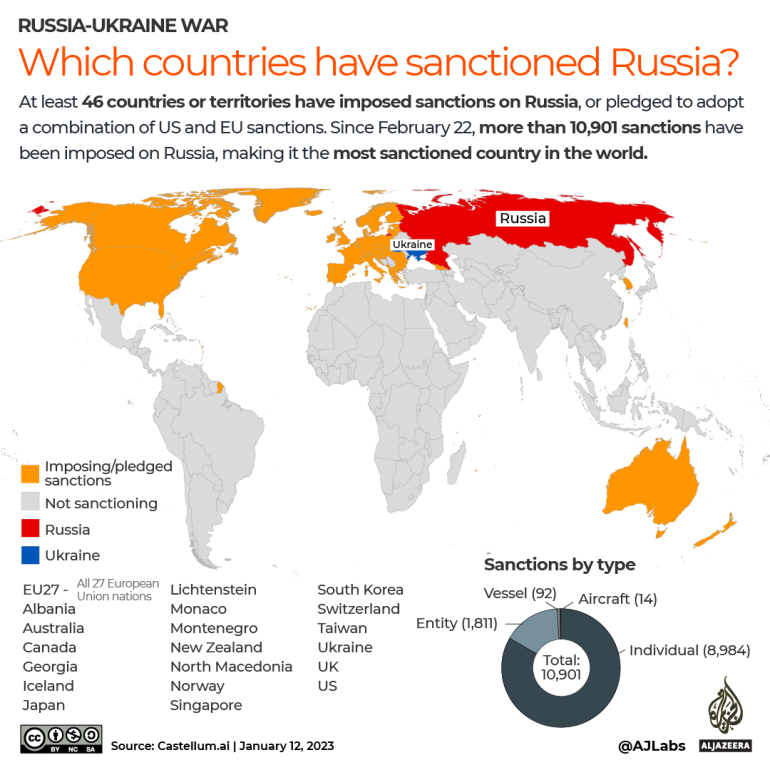
“With diminished access to Western technologies, a wave of foreign corporate divestment and demographic headwinds ahead, the country’s potential growth is set to shrink to 0.5-1.0 percent in the next decade. Thereafter, it will shrink further still, down to just above zero by 2050,” said Alexander Isakov, a Russia economist at Bloomberg.
“These sanctions are working, weakening Russia’s economy and depriving it of critical technologies,” European Council President Charles Michel said.
The great unknown
The EU-Russia energy war has provided a windfall for the world.
Russia discounted its oil by a third relative to market prices to move it last year, making it an attractive proposition to emerging economies. China, India and Turkey have all increased their uptake of Russian fossil fuels, replacing much of the income lost from the EU.
This year, the Institute of International Finance said it was tracking record shipments of crude leaving Russian ports.
Does this mean Russia is beating EU sanctions?
In January, the International Monetary Fund (IMF) said Russia’s economy only contracted by 2.2 percent last year, despite earlier expectations of a 7.6 percent drop, and forecast it would grow by 0.3 percent this year.
“Russian crude oil export volumes are not expected to be significantly affected, with Russian trade continuing to be redirected from sanctioning to non-sanctioning countries,” the IMF said.
Not everyone shares the IMF’s view. The World Bank foresees the Russian economy shrinking 3.3 percent this year, and the Organisation for Economic Co-operation and Development predicts it will contract by 5.6 percent.
Part of the uncertainty is that no one is sure how effective the West will be in containing Russia’s fossil fuel trade with non-sanctioning countries, which comprise 59 percent of the world’s population.
In an exercise never before attempted, the EU and Group of Seven (G7) are flexing their geopolitical muscle, refusing to insure tankers carrying cargoes of Russian oil to any destination in the world if those cargoes are priced over $60 a barrel.
The Helsinki-based Centre for Research on Energy and Clean Air estimated that during their first month in force, the EU ban on Russian crude and the global price cap cost Russia just over $5bn in export revenue.
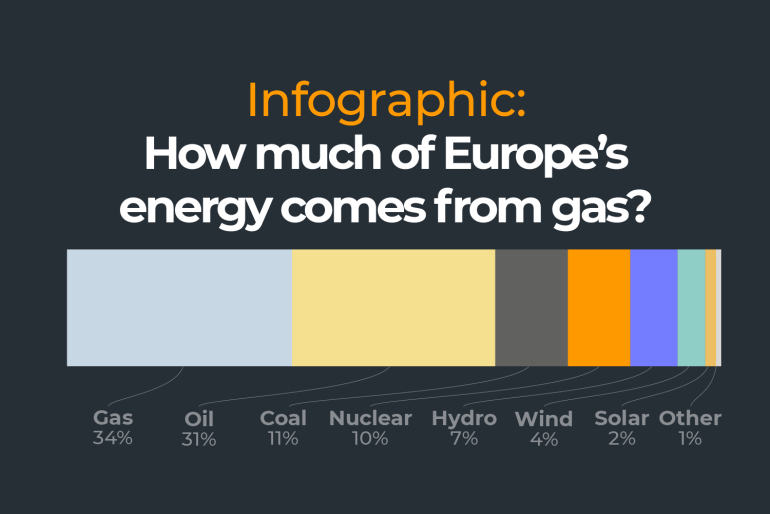
Following such encouraging early signs, the EU and G7 doubled down on price caps to third parties. An EU summit on February 9 announced new caps of $100 per barrel on premium petroleum products (diesel, kerosene and petrol or gasoline) and $45 per barrel of discount oil products (fuel oil, naphtha), effective April 5.
Russia has responded by threatening to cut oil production by half a million barrels a day in March, which could raise prices globally, but that is a double-edged sword, also affecting Russia’s main ally, China.
“We have to look at the knock-on effects of all this,” said Leigh. “Given discounted prices for Asia, and that prices have fallen in Europe, Russian revenues are going to fall considerably. Put that with the expenditure on the military and Russia’s debt position. The Kremlin has been paranoid about debt, and hasn’t been willing to draw down on cash reserves, but it may now have to revise that.”
Given that the West’s financial doors are shut to Russia, and $300bn in Russian sovereign assets are frozen in Europe, Russia could find it difficult to finance its war in the long term.

